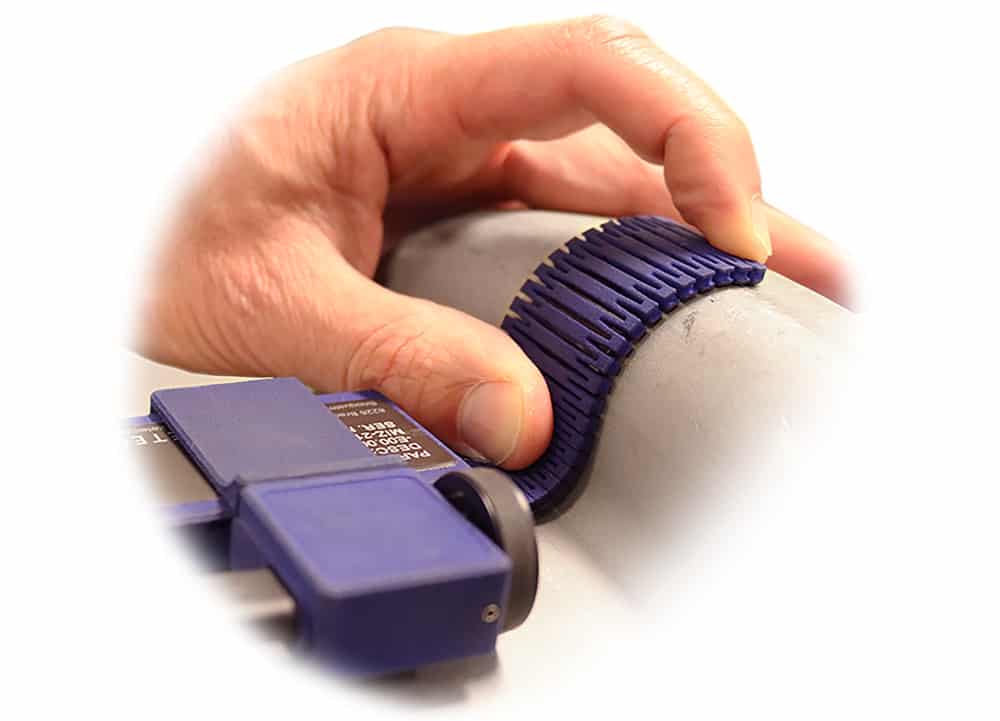How Effectively Can Eddy Current Testing Detect Cracks?

Nondestructive testing analysts have a variety of NDT methods to choose from nowadays, and for many, eddy current testing (ECT) has become the preferred technique for a wide variety of inspection scenarios. But can eddy current testing (ECT) detect cracks more efficiently than other methods? While it is not without its drawbacks, compared to many of the alternatives, eddy current retains many distinct advantages over other NDT approaches to crack detection thanks to advanced technologies that support incredibly thorough and streamlined inspection processes.
Detecting Cracks at Surface and Sub-Surface Levels
Eddy current allows analysts to inspect materials on a surface and near-surface level. In terms of detection, signal quality is key—ECT instruments with high signal quality can provide more comprehensive results than lower-quality options. The best eddy current instruments can detect cracks for complex inspections like tubing via multiple frequencies and dual options, and can pick up developing cracks as small as 0.1 mm or less in depth.
When using ECT for crack detection, high frequencies can lower penetration depths, increasing the phase differential between defects and fostering a more detailed scrutinization of small-scale cracks. On the other hand, low frequencies increase depth penetration for tests requiring deeper probing, but at the expense of lower sensitivity. Lower frequencies are necessary in cases where higher permeability and higher conductivity levels are present. This is where ECT begins to lose its edge over other NDT methods, as deeper penetration depths reduce signal quality and the overall effectiveness of the technique.
For inspections that need to penetrate more deeply beneath the surface, eddy current testing takes a backseat to methods like ultrasonic testing. In fact, in many cases, phased array ultrasound may be the most effective option, as PAUT can perform accurate readings even at great depths and offers wave-beam customization options that can help analysts detect difficult-to-read anomalies such as parallel cracking.
Inspecting Conductive and Nonconductive Materials
As efficacious as ECT may be in many testing scenarios, one drawback is that it cannot be applied when inspecting nonconductive materials. However, eddy current can be used to measure both conductive and nonconductive coatings, and its ability to measure also measure conductivity can be helpful in distinguishing between ferrous and nonferrous alloys. Furthermore, ECT remains one of the best methods for metal crack testing in a variety of conductive materials, including steel welds, copper pipes, and aluminum plates.
Eddy Current Array Offers Enhanced Crack Detection
While standard eddy current testing provides many advantages over other NDT options for crack detection, eddy current array (ECA) can provide even more thorough and accurate results than typical ECT techniques. Using eddy current array, analysts can detect minute flaws with a single pass of the instrument. Array probes also have unique coil sets that can accommodate different surface dynamics and material compositions. ECA also offers other benefits, such as:
- Faster readings and reduced inspection times
- A rotatable scanner that can identify both flaw positioning and dimensions
- Added positioning parameters that ensure all areas of interest are inspected
Where eddy current array truly excels, however, is irregular surface materials. Unconventional compositions might interfere with standard eddy current testing, but ECA utilizes advanced technologies that can maintain signal quality even when inspecting objects with irregular geometries.
Example: An analyst needs to inspect a weld with weld toes. The rough surface of the T-weld could make flaw detection a challenge if the analyst uses standard eddy current testing techniques. Instead, the analyst employs eddy current array for a more thorough inspection, ensuring no crack—including several infinitesimal ones hidden between the weld toes—goes undetected.
To take full advantage of ECA’s effectiveness at detecting cracks, it’s important to ensure analysts are working with cutting-edge eddy current technology. ECT technology is constantly improving, and obtaining the latest in advanced equipment and software can offer analysts the greatest possible inspection speed and accuracy. This greatly reduces the risk of overlooked flaws that may develop into critical problems before they can be detected during the next round of routine maintenance, as high-quality equipment can provide analysts with complete, reliable data that can be used to keep operations running smoothly—and safely.
Zetec is a trusted name in NDT, and proudly provides companies in a variety of industries with cutting-edge eddy current and ultrasonic testing solutions. Contact us today to learn more about how to improve crack detection with advanced ECT equipment and software.





